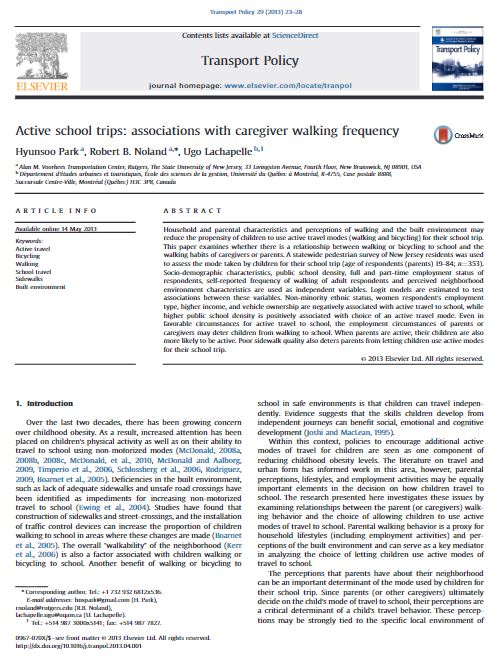Abstract
Household and parental characteristics and perceptions of walking and the built environment may reduce the propensity of children to use active travel modes (walking and bicycling) for their school trip. This paper examines whether there is a relationship between walking or bicycling to school and the walking habits of caregivers or parents. A statewide pedestrian survey of New Jersey residents was used to assess the mode taken by children for their school trip (age of respondents (parents) 19–84; n=353). Socio-demographic characteristics, public school density, full and part-time employment status of respondents, self-reported frequency of walking of adult respondents and perceived neighborhood environment characteristics are used as independent variables. Logit models are estimated to test associations between these variables. Non-minority ethnic status, women respondent’s employment type, higher income, and vehicle ownership are negatively associated with active travel to school, while higher public school density is positively associated with choice of an active travel mode. Even in favorable circumstances for active travel to school, the employment circumstances of parents or caregivers may deter children from walking to school. When parents are active, their children are also more likely to be active. Poor sidewalk quality also deters parents from letting children use active modes for their school trip.
